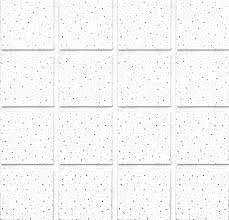- Afrikaans
- Albanian
- Amharic
- Arabic
- Armenian
- Azerbaijani
- Basque
- Belarusian
- Bengali
- Bosnian
- Bulgarian
- Catalan
- Cebuano
- Corsican
- Croatian
- Czech
- Danish
- Dutch
- English
- Esperanto
- Estonian
- French
- German
- Greek
- Hindi
- Indonesian
- irish
- Italian
- Japanese
- Korean
- Lao
- Malay
- Myanmar
- Norwegian
- Norwegian
- Polish
- Portuguese
- Romanian
- Russian
- Serbian
- Spanish
- Swedish
- Thai
- Turkish
- Ukrainian
- Uzbek
- Vietnamese
নভে. . 09, 2024 03:17 Back to list
Ceiling Grid Support Wire Installation Techniques for Effective Hanging Solutions
Understanding Ceiling Grid Hanger Wire Essential for Suspended Ceiling Systems
Suspended ceilings, also known as drop ceilings, are a popular choice in both commercial and residential construction. They offer aesthetic benefits, improve acoustics, and allow for easy access to plumbing, wiring, and HVAC systems. A crucial component in the installation of these ceilings is the ceiling grid hanger wire, which plays a vital role in ensuring stability and alignment. In this article, we will explore the significance of hanger wire in suspended ceiling systems, its specifications, installation procedures, and best practices.
What is Ceiling Grid Hanger Wire?
Ceiling grid hanger wire is a type of support wire specifically designed to suspend the grid framework that holds the ceiling tiles. This wire is typically made from durable materials, such as galvanized steel or stainless steel, to provide high tensile strength and resistance to environmental factors. Depending on the application, hanger wires come in various diameters, with a common range between 12 to 16 gauge. The selection of wire gauge is crucial, as it directly affects the load-bearing capacity of the suspended ceiling.
Importance of Hanger Wire
The primary purpose of ceiling grid hanger wire is to provide structural support for the ceiling grid system. This ensures that the grid remains level and secure, allowing for the even placement of ceiling tiles. A properly installed hanger wire prevents sagging and movement of the grid, which can lead to misalignment and aesthetic issues. Additionally, a stable grid system enhances the overall safety of the suspended ceiling, reducing the risk of tiles falling or dislodging.
Moreover, ceiling grid hanger wire contributes to sound insulation and thermal efficiency. By maintaining the proper distance between the ceiling tiles and the structural ceiling above, these wires create a dead air space that improves acoustic dampening. This feature is essential in commercial settings, where noise reduction is often a priority.
Installation Procedures
Installing ceiling grid hanger wire involves several steps that require careful planning and execution. Here’s a brief overview
ceiling grid hanger wire

1. Planning the Layout Before installation, it’s essential to measure the room and plan the layout of the ceiling grid. This includes determining the placement of all grid sections and identifying the points where hanger wires will be attached.
2. Marking the Locations Once the layout is finalized, mark the locations on the structural ceiling where the hanger wires will be installed. Typically, hanger wires should be positioned no more than 4 feet apart to ensure sufficient support.
3. Attaching the Hanger Wire Use appropriate anchors or clips to secure the hanger wire to the structural ceiling. If installing on concrete, masonry anchors may be required. Ensure that the wire is cut to the correct length, allowing for adjustment to maintain levelness.
4. Connecting the Grid System After the hanger wires are securely in place, connect the ceiling grid components to the wires. This includes attaching cross members and main runners according to the layout plan. Use adjustable clips or clips designed for this purpose to allow for height adjustments.
5. Final Adjustments Once the grid is installed, it’s important to check for level and make any necessary adjustments. This ensures that the ceiling tiles will fit correctly and that the grid is stable.
Best Practices
When using ceiling grid hanger wire, consider the following best practices
- Follow Local Building Codes Always adhere to local building regulations and codes regarding the installation of suspended ceilings and the use of hanger wires. - Use Quality Materials Invest in high-quality hanger wires and accessories. Poor materials can lead to failure and safety hazards. - Regular Inspections Periodically inspect the grid and hanger wires to identify any signs of wear or loosening over time.
In conclusion, ceiling grid hanger wire is an essential component of suspended ceiling systems. Understanding its purpose, installation procedures, and best practices ensures that ceilings remain safe, functional, and visually appealing. Whether you are a contractor or a DIY enthusiast, mastering the use of hanger wire can greatly enhance the quality of your suspended ceiling projects.
-
Transform Interiors with PVC Gypsum Ceiling: A Stylish, Durable, and Moisture-Resistant SolutionNewsMay.19,2025
-
The Smart Interior Upgrade: Discover the Durability and Versatility of Gypsum Ceiling Access Panel SolutionsNewsMay.19,2025
-
The Smart Choice for Interior Design: Discover the Value of PVC Gypsum Ceiling SolutionsNewsMay.19,2025
-
Mineral Fiber Ceiling Tiles: The Smart Blend of Performance and AestheticsNewsMay.19,2025
-
Mineral Fiber Ceiling Tiles: The Superior Choice Over Gypsum for Sound and Fire SafetyNewsMay.19,2025
-
Mineral Fiber Ceiling Tiles: Eco-Friendly Strength and Style for Every CeilingNewsMay.19,2025







